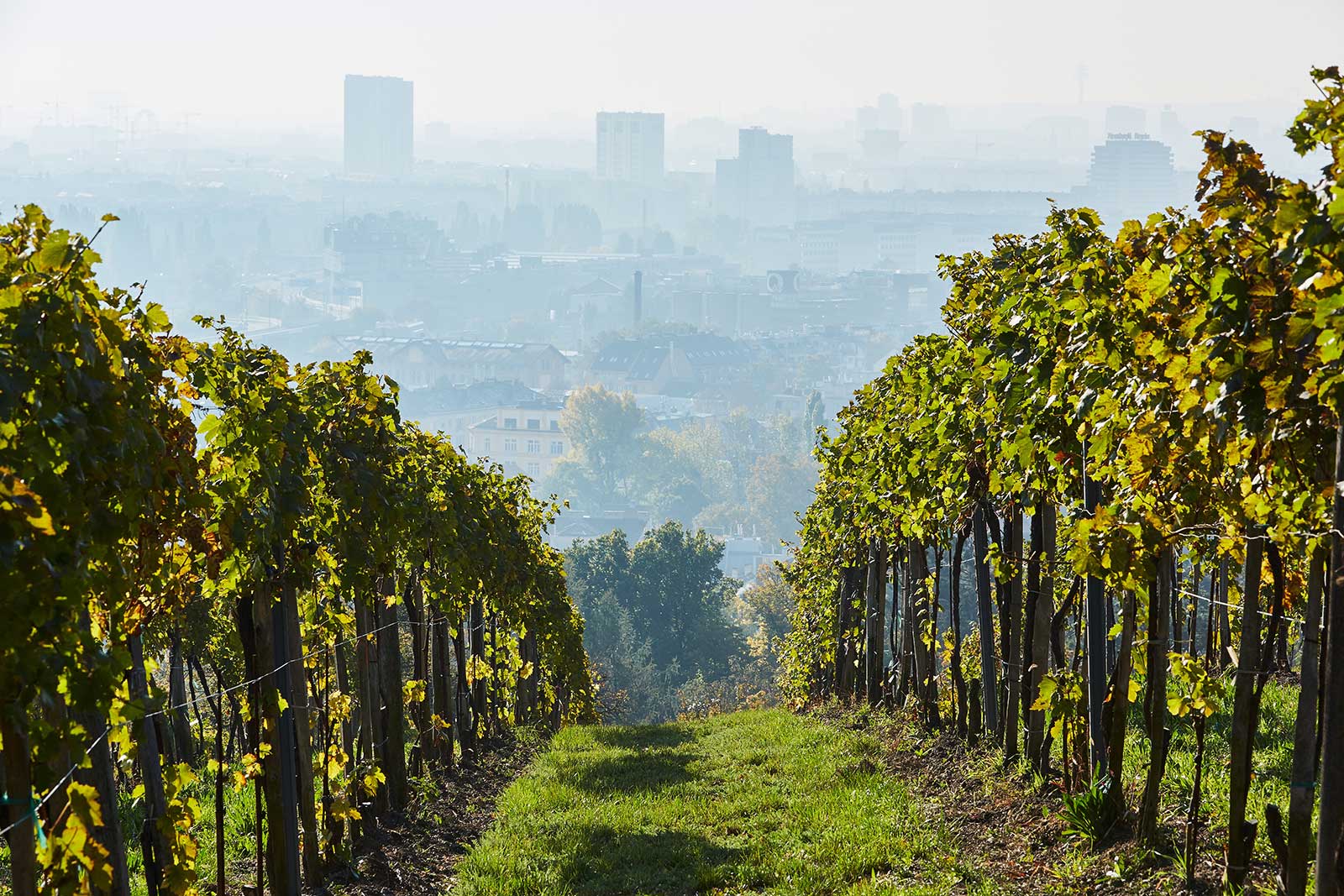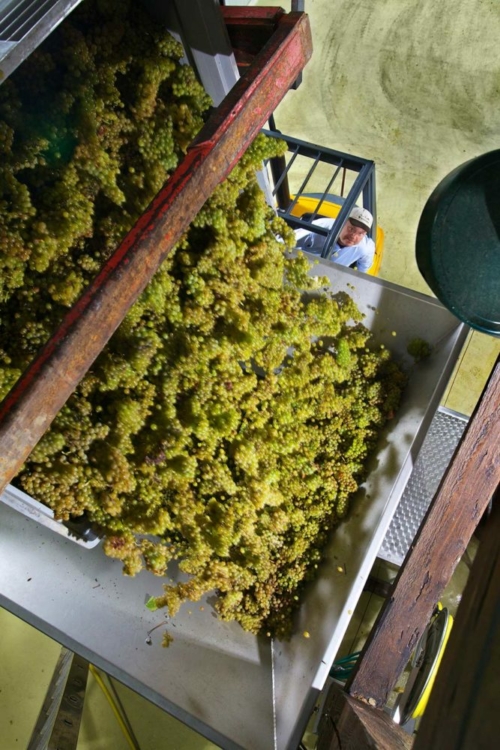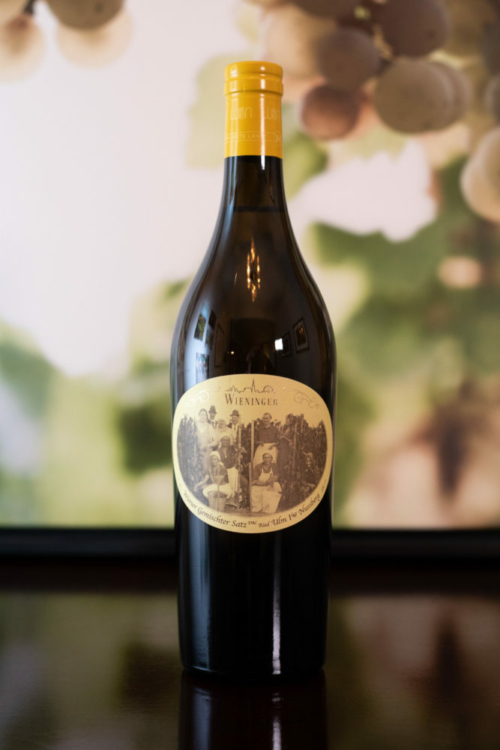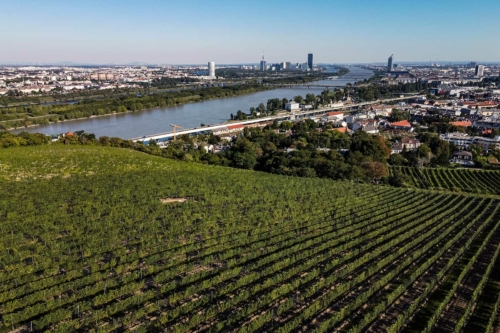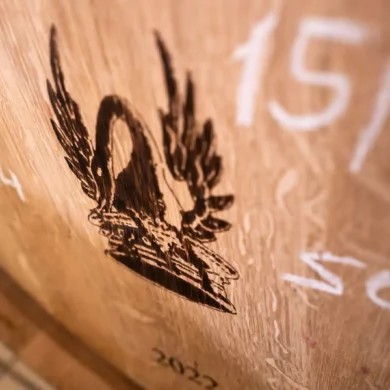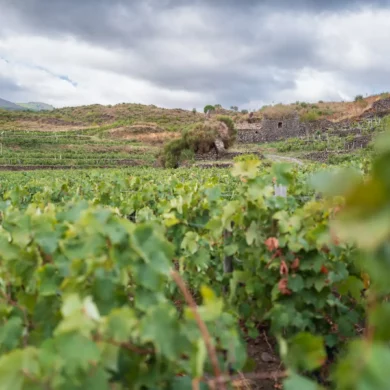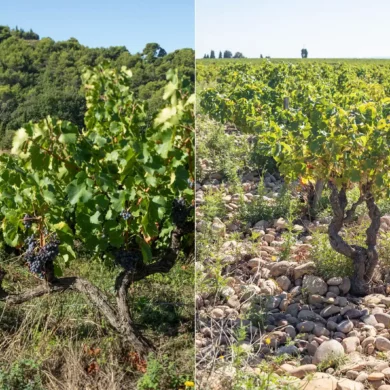It is easy to see why the wine world has a fixation on grapes varieties: with their distinctive flavor profiles and structural traits, they offer us reference points and frame our expectations. In the Americas — where grapes are often the headline of a wine’s label — consumers see the variety as the lighthouse in a storm of options. Meanwhile, across Europe, countless appellations enforce their guidelines based on varietal wines. The calculation in this era of terroir obsession is simple: lean into the “typicity” of a known grape, and let all the other details surrounding it speak to the region’s identity. One only needs to think of Chablis’ unique version of Chardonnay or the savory, meatiness of Sangiovese from Brunello di Montalcino to understand the power grape varieties have in branding an appellation’s wine.
So what does it look like when a winemaker produces a wine with little regard for grape varieties? Or, more to the point, when a community of winemakers embraces such a philosophy as their regional identity?
Reinventing the Field Blend
Field blends are an idiosyncratic genre in wine. Rather than blending different wines from different varieties, wines are made from a batch of diverse grapes harvested and fermented all at once. Some are underripe, some are overripe. The sum balances the whole.
Worldwide, these types of wines are either the work of rustic winemaking or renegade individuals whose esoteric vision often feels like a one-off. But in the hills surrounding Vienna, Austria, field blends are a bit of a cultural phenomenon, and they’re experiencing a heyday right now. (One might call it a renaissance, but that would imply they once had a great reputation).
“We try to produce a certain style of wine addicted to the terroir of the vineyard … no matter what the varieties are in there.”
Fritz Wieninger, Winemaker
Known as Wiener Gemischter Satz, or literally “Viennese mixed planting,” the wines were once limited to local pub fare. But now, thanks to meticulous vineyard practices and winemaking, they are gaining an international following.
“What we are doing today is exactly what was done 150 or more years ago,” notes winemaker Fritz Wieninger, who has led much of the effort to revive Wiener Gemischter Satz. “We try to produce a certain style of wine addicted to the terroir of the vineyard, and try to find a mix where the most successful or most interesting wine comes out — no matter what the varieties are in there.”
Up to 20 different varieties could be present in the wine, ranging from the familiar zest of Sauvignon Blanc and the well-known glycerin texture of Riesling, to lesser-known, harder-to-tease out local varieties like Neuburger, Rotgipfler or Zierfandler. For consumers, each bottle is like a blind tasting, but for the producers who prune the vines and walk the rows, they are the ultimate expression of their home turf, as well as the singularity of every vintage.
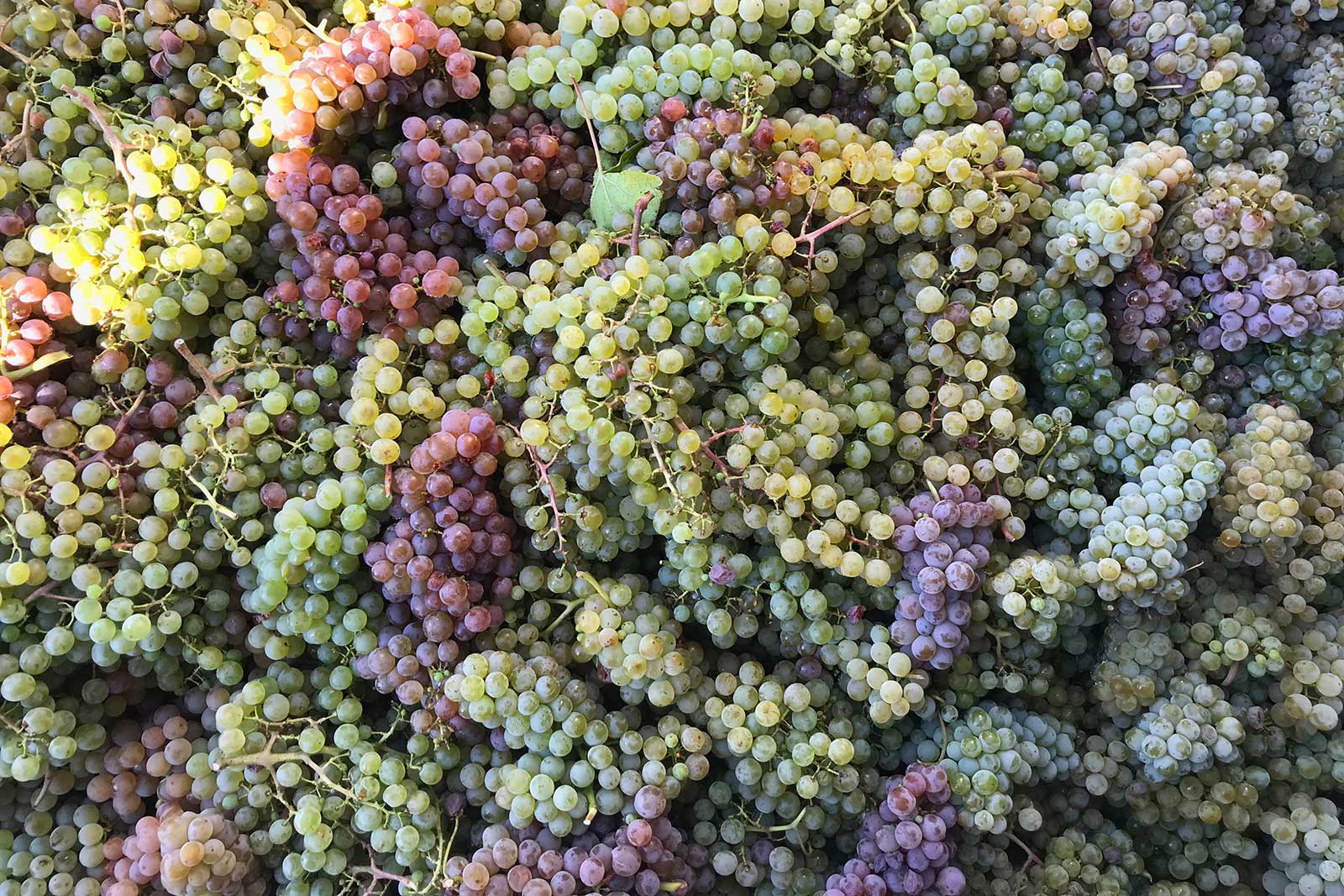
“Something from Yesterday”
Co-planting a vineyard has historically been a simple calculation against risk. The more diversity you have, the better you can guard against unfortunate circumstances, like a late-spring frost or late-summer rot, or even specific types of pest. Each grape variety operates on its own seasonal timeline, and has its own set of defenses.
The problem with this approach has less to do with the quality of the grapes, and more to do with the lack of a reliable, identifiable product. Following World War II, the mixed planting approach became passé as the efficiencies of industrialization took over the wine business. But local pubs in the nation’s capital kept the practice on life-support. These heurige, as the taverns are called, were known for selling the fresh-pressed alcoholic juice of each harvest — a wine also called heurige. Many were operated by winemaking families.
“Nobody asked what was in there,” said Fritz, referring to grape varieties. “Once in a while there was just Grüner Veltliner inside, and once in a while there were different varieties in there, or it was a Gemischter Satz.” The wine was a local custom, often paired with asparagus and young potatoes just pulled from the soil, whose earthier bite matched well with the young wines. While mixed vineyards were being replanted across Austria, this Viennese custom held on, but only by its fingernails.
“It was like an insult,” Fritz recalled. “You ask somebody ‘I invite you for a glass of Gemischter Satz’ and the other one would say ‘what did I do?'”
That is because the reputation of co-fermented heurige wines was far from sterling. They lacked structure, were often imbalanced and short-lived, and since they were poured from the cask in local taverns, they were rarely bottled. “It was like an insult,” Fritz recalled. “You ask somebody ‘I invite you for a glass of Gemischter Satz’ and the other one would say ‘what did I do?'”
But, Fritz added, older winemakers had advocated for the Gemischter Satz style for years, telling him it was the most typical style of Vienna’s winemaking. “For me, as a young winemaker, this was something from yesterday,” he added.
However, his opinion began to change in 1999 when he purchased a remarkable plot of land, an old-vine vineyard in Nussberg known as Ried Ulm. His initial feeling was to replant the mixed vines entirely with Chardonnay and Grüner Veltliner, purely for business reasons. But a shred of curiosity led him to make a Gemischter Satz in a single 10 mL tank. For comparison, he earmarked choice plots of Grüner Veltliner, Riesling and Pinot Blanc from the vineyard, harvesting and vinifying them separately. Those varietal wines impressed him, especially the Pinot Blanc, but when he came to the Gemischter Satz, he was overwhelmed.
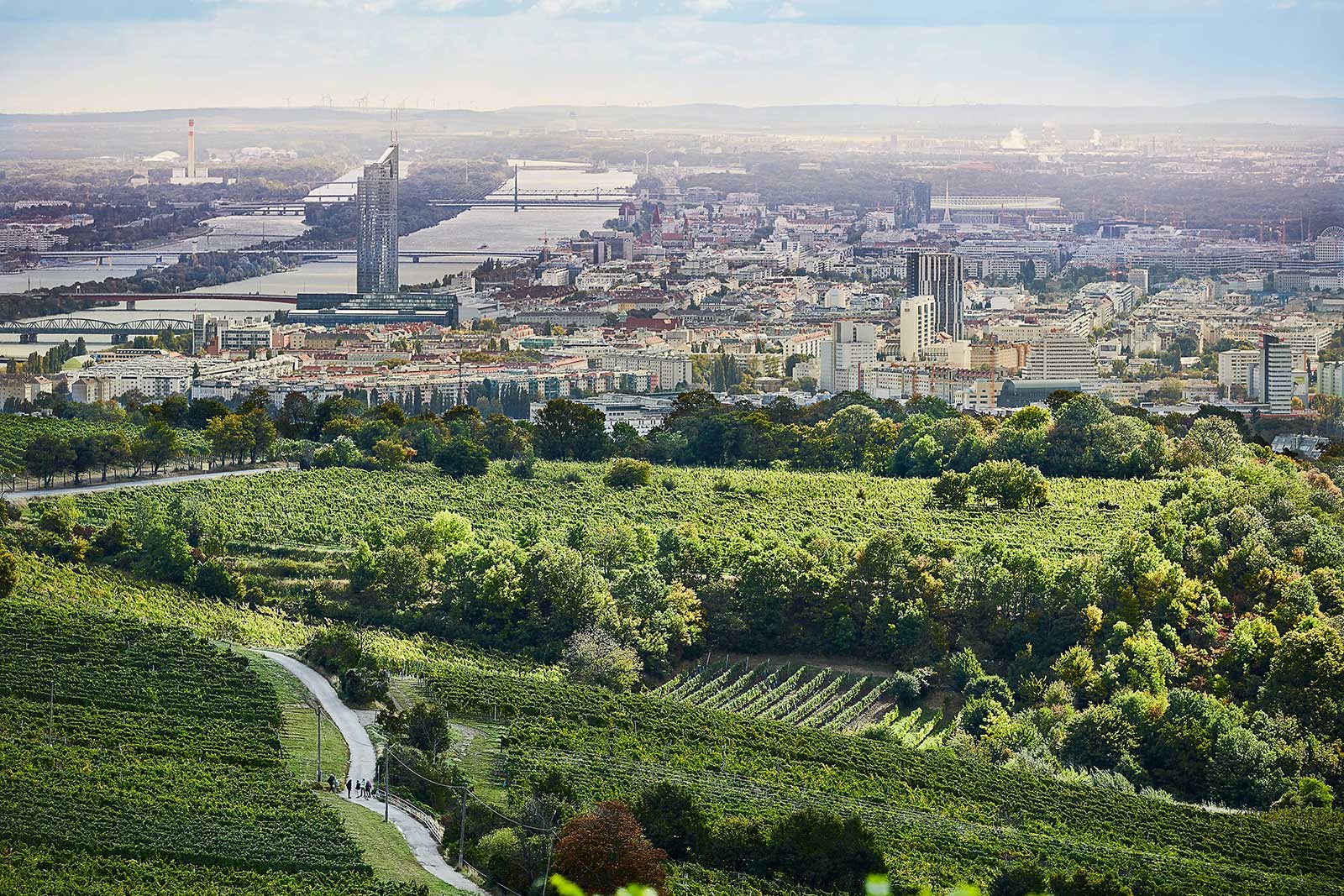
“I thought ‘oh God, what is this? A diamond I picked out here?'” he recalled. “For me it was like Meursault without oak, full of extreme terroir from chalk. There was no Chardonnay [in the field blend], but this style was very much in that direction.”
What his older colleagues had been telling him finally made sense, and it was in his glass. The trick now, was figuring out how to produce this wine and — more importantly — sell it to the right clientele. One thing was clear: this was not going to work as heurige.
In 2006, Fritz Wieninger and a group of local winemakers banded together as WienWein to formalize the standards of Vienna’s wine, in particular the Gemischter Satz field blends. One of the biggest decisions was simply what to call these emerging, vineyard-centric wines. In many ways, there was a newness to them, as they were now carefully produced with an international clientele in mind. Were they actually Gemischter Satz or something else? Was that term an albatross locally? Could they revamp it entirely?
Ultimately, the growers stuck with the name and were able to introduce it to a major Austrian wine retailer, as well as the nearby ski resorts, where the style of wine embodied by Gemischter Satz perfectly matched an après-ski context. In 2013, WienWein’s tireless efforts led to DAC (Districtus Austriae Controllatus) status, the highest designation in Austrian wine, and the first (and only) dedicated to a particular region’s technique.
The Unique Technique
It may seem like a rather bold and daring approach to let the vineyard take the wheel; to relinquish so much control of a wine’s outcome. But Fritz was keen to tell me that the same amount of labor went into these wines as any other, and that the Gemischter Satz approach was far from hands off. “From my experience, there is no difference [in management] if it is a Gemischter Satz or if it is a single-varietal vineyard … except the harvest.”
That is because while the mixed plantings offer a wide range of flavor profiles and degrees of ripeness, they narrow the appropriate window to pick the grapes. Fritz and his colleagues can accept some degree of overripeness in the grapes, but not shriveled berries or botrytis. They can also accept some degree of underripeness, but not “unripeness,” as he puts it. The vineyard as a whole must be in a maximum state of maturity to get the appropriate mix of flavors, textures, acidity and alcohol. It is a bit like catching a firefly in the night, and when you scale this practice across 100 different plots spread across the Viennese hills — as the Wieninger winery has — you have a rather complicated harvest.
But Fritz brushed off any suggestion that his wines were difficult to make. For him, pulling off a great Gemischter Satz starts with biodynamic management in the vineyard, a practice that requires him to pay careful attention to the vineyard ecosystem, as well as make decisions on a vine-by-vine level. But this is a personal choice, and something he does for his varietal wines as well. If anything, the Gemischter Satz movement — with its focus on overall maturity of the fruit — prompted him to spend more time in his vineyards, getting in touch with the patterns and rhythms of the plants.
“This is the place where it happens,” he said. “You cannot do the work from your laptop.”
Per the Gemischter Satz DAC regulations, winemakers must register their mixed-planted vineyards for the purpose of Gemischter Satz, with a minimum of three different grape varieties planted. Once the grapes are harvested, they are co-fermented together. The rules also stipulate that a single variety cannot exceed 50% of the blend, while the grape accounting for the third-largest portion of the blend cannot be less than 10%. The use of wood-vessel fermentation is allowed, but a tasting panel ensures that there is no overt taste imparted from the wood. In practice, most are fermented in temperature-controlled stainless-steel tanks, to better capture the freshness of the vineyard.
Two distinct styles of Gemischter Satz are regulated. The simpler versions tend to be blends of multiple vineyards, with an alcohol level at or below 12.5%. They’re best drunk upon release or within two years of the vintage. The single-vineyard versions are known as Erste Lagen (first growth) and are earmarked by the 1ÖWT designation (Österreichische Traditionsweingüter). Their priority is to showcase terroir and vintage, and as a result, winemakers are allowed to leave a little residual sugar if it is deemed appropriate, although many are still vinified dry. They must exceed the 12.5% alcohol mark, and cannot be released before March 1 of the following year. Their drinking window is also a bit longer, perhaps five years (although I’d be curious to age them given the vivacious energy of the examples I’ve tasted).
In the Glass
My first-taste of Gemischter Satz — Wieninger’s entry-level (see below) — came during a virtual seminar on biodynamic viticulture. It was like a jolt of energy; a lightning bolt of freshness with tones reminiscent of crisp pear, sweet grass and spring blossoms. I wanted to know more (and here we are).
However, it was the Erste Lagen vineyard wines from Wieninger that truly thrilled me. Both wines hailed from the Nussberg district, north of the city. Wieninger’s 2018 Ried Rosengartel sports a pink label, but is not a rosé (Gemischter Satz wines can only be white). In the glass, it hits all the sweet spots like a folk-pop song you can’t resist: peppy, fruity, yet anchored by an earthiness to keep things interesting. It’s texture was also very intriguing: full-bodied like Riesling, yet delicate on the finish.
Wieninger’s 2018 Ried Ulm Gemischter Satz, however, blew me away. Immediately it presented a snappy, herbaceous-meets-earthy note that reminded me of the distinct aroma of flat-leaf parsley — a tone I’ve never encountered in a wine. As surprising as it was to encounter, I was equally astonished how much it appealed to me, and how versatile it seemed at the table. The wine is incredibly sapid, yet for all of its complexity — the various tones that, as a taster you want to pin down — it comes across with extreme focus, right down the center of the palate. For that, it seems to embody the ethos of Gemischter Satz the most: that caught firefly in the night, an expression of place and time, which shakes free from the intellect to a place of pure sensual enjoyment. An eat, drink and be merry wine like few others.
2019 Wieninger Wiener Gemischter Satz
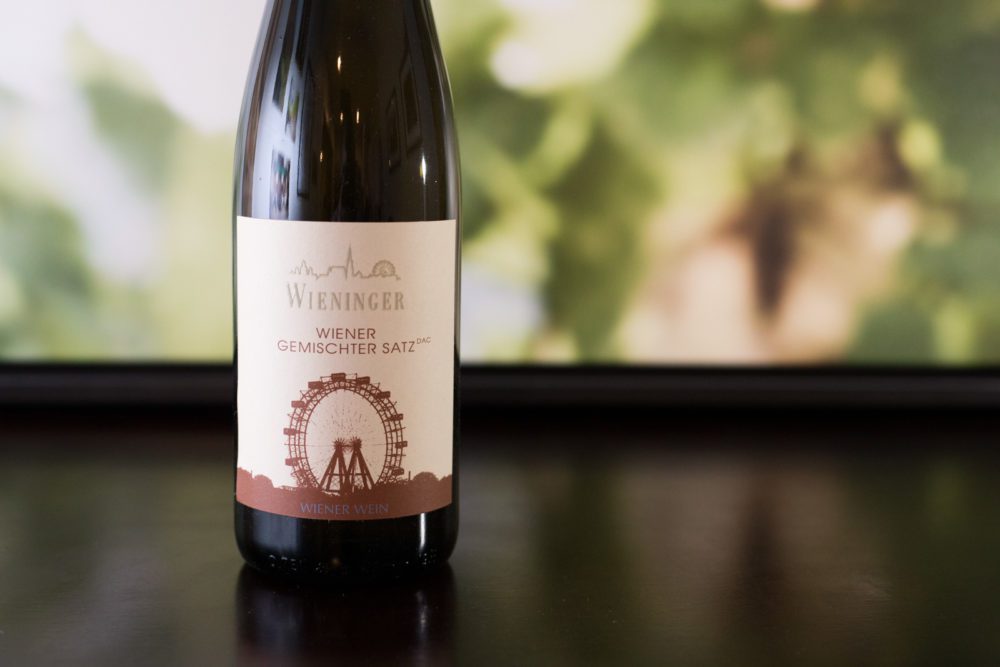
Wiener Gemischter Satz DAC (Vienna)
Grapes: Field blend of Grüner Veltliner, Pinot Blanc, Welschriesling, Chardonnay, Riesling, Rotgipfler, Zierfandler, Sylvaner, Traminer and Neuburger
Alcohol: 12%
Opinion: ★★★★ 3/4 (out of five)
Food-friendliness: Impeccable
Value: Exceptional
A beginner might like … the noticeable energy this wine possesses. It’s like flipping on a light switch for your tastebuds. I sampled this wine alongside a handful of other biodynamic white wines from Austria, and while all of them were good, this wine’s rascally sense of fun made me want to revisit it with dinner that night.
A wine obsessive might like … exploring what’s familiar and what’s not. Gemischter Satz is a little bit like a rustic soup you assembled with the ingredients on hand: when done well, everything melds together harmoniously, to a point that you don’t even notice what you put in there — you just get goodness. This introduction perfectly embodies that spirit: you might recognize Grüner Veltliner or Riesling, or maybe even Sauvignon Blanc, but its beside the point when the whole is greater than the sum of its parts.
2018 Wieninger Ried Rosengartel 1ÖWT Nussberg Wiener Gemischter Satz
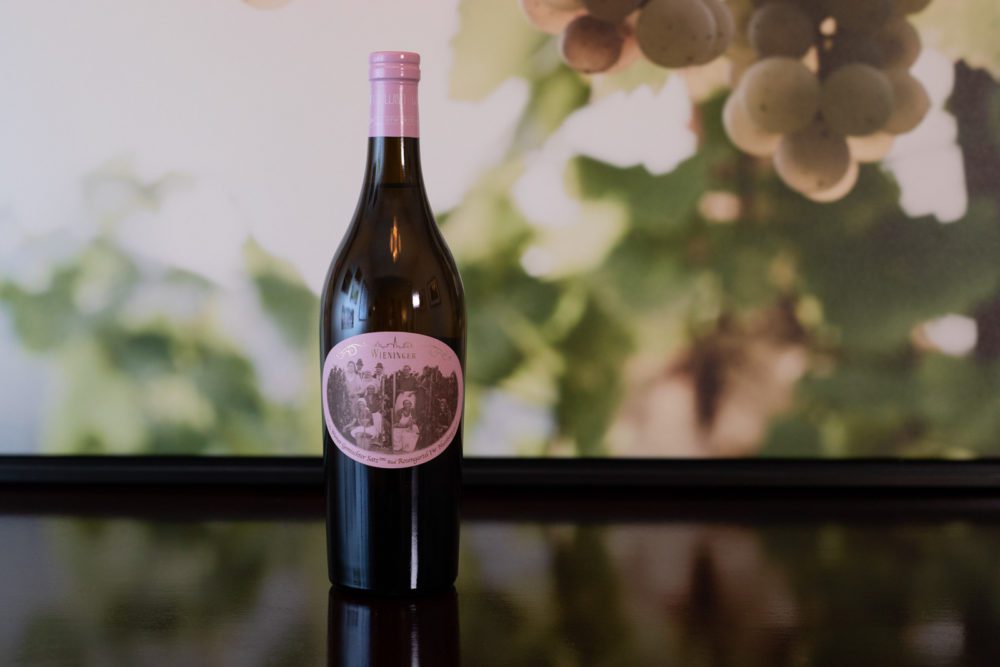
Wiener Gemischter Satz DAC (Vienna)
Grapes: Field blend of Grüner Veltliner, Pinot Blanc, Neuburger, Traminer and Riesling
Alcohol: 12%
Opinion: ★★★★ 3/4 (out of five)
Food-friendliness: Impeccable
Value: Exceptional
A beginner might like … the spirited yet earthy character of this wine. It’s generous tones reminded me of crisp pear, potting soil and roast almond, with a glycerin-like texture that I didn’t want to let go of. “Riesling without the ‘petrol’ tone” I wrote in my notes, regarding the finish.
A wine obsessive might like … exploring the history of the Ried Rosengartel vineyards while taking in a glass. Look, there’s plenty to love in terms of sensation from this wine, but the vineyard district from which it hails date back nearly a millennia, perhaps further. Known as the heart of Nussberg, Ried Rosengartel was first documented for vineyard use in 1365, and during the heights of the Austro-Hungarian empire, it was considered a Grand Cru of sorts. To explore a field blend of this sector is as intellectually thrilling as it is hedonistic.
2018 Wieninger Ried Ulm 1ÖWT Nussberg Wiener Gemischter Satz
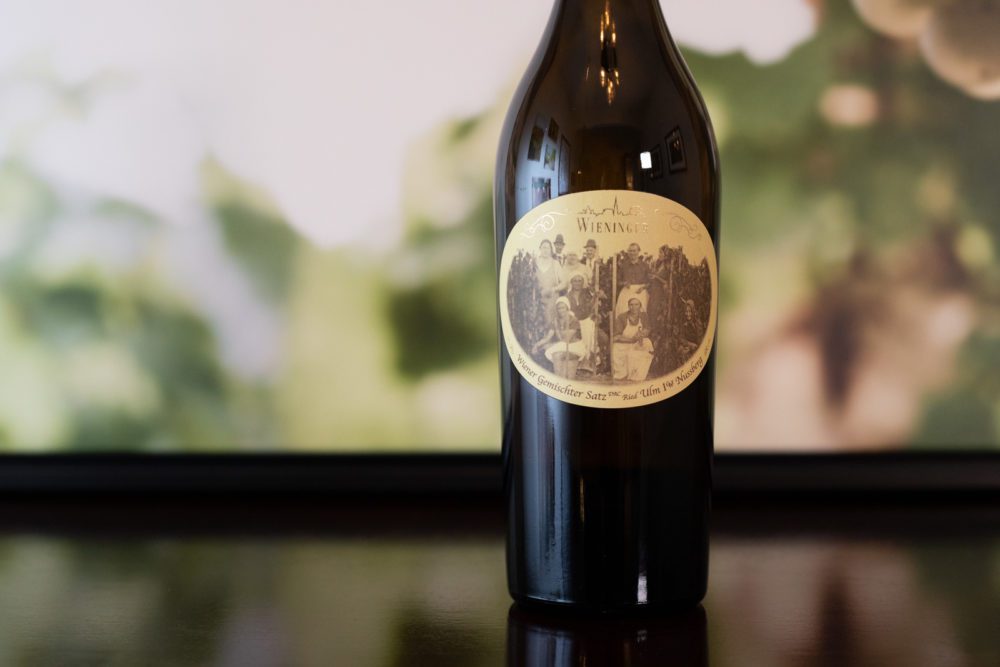
Wiener Gemischter Satz DAC (Vienna)
Grapes: Field blend of Pinot Blanc, Neuburger, Welschriesling, Grüner Veltliner, Sylvaner, Zierfandler, Rotgipfler, Traminer and Riesling
Alcohol: 12%
Opinion: ★★★★★ (out of five)
Food-friendliness: Impeccable
Value: Exceptional
A beginner might like … pinning the aromas of this wild-at-heart wine. Fritz referred to a kind of “crunchiness” that he aspires for in his Gemischter Satz, acknowledging that the English word wasn’t quite exactly right. How can a liquid be crunchy? It is confusing, but I understood the spirit of this observation, because the Ried Ulm Gemischter Satz conjures up aromas of crunchy herbs and rocky terrain after a rainstorm. The fruit tones are also fascinating, wavering between creamy pear and ripe peach. The point is this: Ried Ulm offers a lot, if you want to explore it. If you don’t, its still a simple delight to drink.
A wine obsessive might like … the wine’s extreme minerality. This was the wine that converted Fritz Wieninger into a Wiener Gemischter Satz advocate, and it is not hard to see why. Ried Ulm’s sandstone subsoil and chalky top soil seem to supersede any notion of grape variety identity. I’ve already talked at length about the wine’s surprising aromas, but they seemed to meld as well with the wine’s textural properties in that much-discussed gray area we call “minerality.” This is a wine to challenge your vocabulary, and we could debate at length about what’s really going on here. But I think we’d all agree that its undeniably focused, balanced and exciting.
Note: These wines were provided as samples by Wieninger’s U.S. importer Winebow — the first on a seminar about Austria’s biodynamic winemakers, the second and third, upon my request once we decided to pursue a story on Vienna’s field blends. We’ll certainly be seeking out more wines from this corner of the world. Learn more about our editorial policy.

